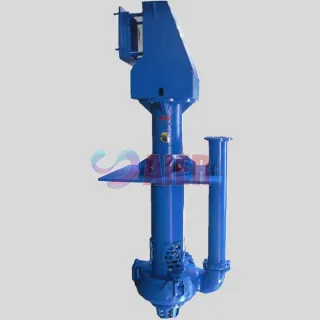Sep . 01, 2024 17:45 Back to list
Reliable Sump Pumps for Effective Water Management
Understanding Sump Pumps Essential Tools for Managing Water Accumulation
Sump pumps are vital devices commonly used in homes, especially in areas prone to flooding or excessive water accumulation. Their primary purpose is to prevent water from pooling in basements or crawl spaces, which can lead to irreversible structural damage, mold growth, and a plethora of other issues. Understanding the function, types, and maintenance of sump pumps can empower homeowners to make informed decisions about water management.
At its core, a sump pump works by removing water that has collected in a sump basin, typically located in the lowest part of a basement or crawl space. When heavy rains occur or when snowy conditions melt, groundwater can rise, collecting in this basin. The pump is activated when the water reaches a certain level, usually determined by a float switch. It then pumps the water out of the basin through a discharge pipe, directing it away from the foundation, thus preventing flooding.
There are two main types of sump pumps submersible and pedestal pumps. Submersible pumps are designed to be submerged in the sump basin, which helps reduce noise and makes them less obtrusive. They are typically more efficient and can handle larger volumes of water. On the other hand, pedestal pumps are positioned above the sump pit, using a long shaft to extend into the water. Although they tend to be less expensive, they can be noisier and are usually less powerful than submersible models.
Choosing the right sump pump is crucial to effectively handle the specific conditions of your home
. Factors such as the likelihood of flooding, the size of the area needing protection, and the amount of water that may accumulate all play a role in determining the best pump for your needs. Additionally, one must consider the pump's horsepower, water discharge rate, and the type of float switch.sump pump

Maintenance of sump pumps is essential to ensure their reliable operation. Regular inspections should be conducted to check for debris that could block the pump or clog the discharge pipe. Testing the pump periodically by pouring water into the basin can help confirm that it activates properly. Homeowners should also consider installing a backup power source, such as a battery backup system, especially in areas prone to power outages during storms.
In addition to primary sump pumps, many homeowners invest in battery backup sump pumps. These devices provide peace of mind, ensuring that the sump pump continues to operate even during a power outage. This dual system is especially beneficial for homes in flood-prone areas, offering a failsafe that protects against potential water damage.
Finally, it’s worth mentioning the importance of proper installation. A poorly installed sump pump can lead to more problems than it solves. It’s advisable to seek professional help for installation to ensure that the system is set up correctly, following local building codes and best practices.
In conclusion, sump pumps are critical for preventing water damage in homes, especially in flood-prone areas. By understanding their function, types, and maintenance requirements, homeowners can effectively safeguard their properties against water accumulation. Investing in the right sump pump and ensuring its proper maintenance can save homeowners from costly repairs and provide a safe, dry living environment.
-
Wholesale Casting Dredge Pump Part - High Quality China Manufacturers & Suppliers
NewsJul.04,2025
-
High Quality Slurry Pump Seals Reliable China Suppliers & Manufacturers
NewsJun.24,2025
-
High Quality Portable Submersible Slurry Pump Supplier & Manufacturer from China
NewsJun.10,2025
-
Slurry Pump Parts Manufacturer – High Quality Rubber Spare Parts from China
NewsJun.10,2025
-
High Quality 1/3 HP Submersible Sump Pump with Vertical - Reliable Supplier & Factory Price
NewsJun.10,2025
-
High-Efficiency Centrifugal Slurry Pumps India
NewsJun.10,2025
